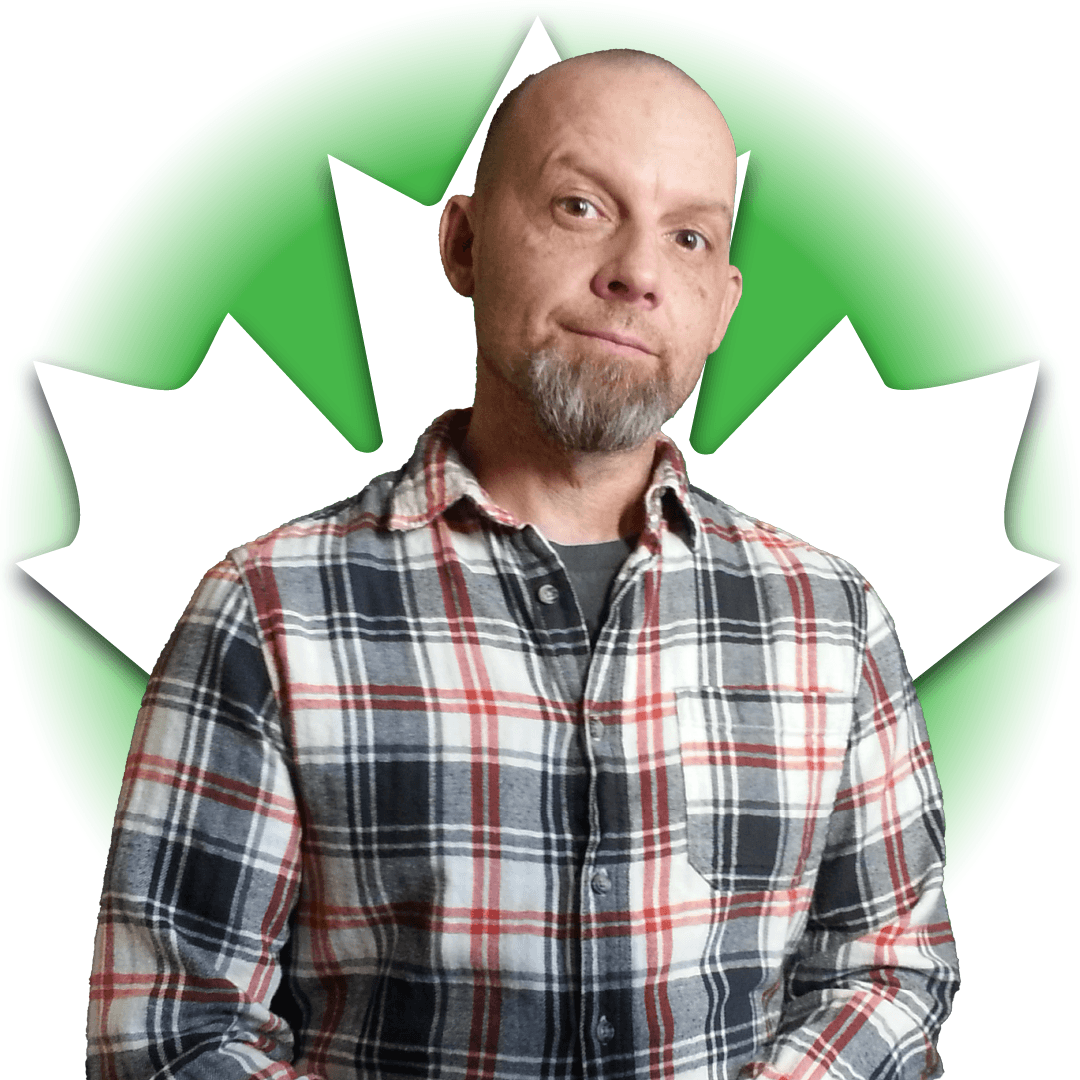
Title: Additive Manufacturing & The Global Housing Crisis
Plenary Presentation
Mr. Frank St. Gelais
Founding Director and VP – Creative & Design, 3DPHC, Canada
Abstract
Additive Manufacturing technologies are developing at a breakneck pace. Not a day goes by without some important news in our sector. Many of the speakers at this forum will focus on their research, breakthroughs, and advances, and that is as it should be.
We will diverge from this format, just a little and focus on a real-world application that has the potential to improve the lives of millions of people around the world.
Very large format 3D printers, using a variety of cementitious materials, often variations on conventional concrete, can produce housing units that are robust, energy efficient, culturally appropriate, and environmentally responsible. Perhaps more importantly, they can be produced less expensively than conventional construction methods and they take up to an order of magnitude less time to complete.
By fostering an environment of collaboration and cooperation, we envision a global network of socially conscious Construction 3D Printing companies working to address the existing global housing shortage while providing safer, culturally suitable housing for those who need it most.
Biography
Frank St. Gelais spent his early years in a variety of service industries and has developed an incredibly strong sense of empathy for those who are less fortunate. He then studies graphic design in Calgary and has transferred that design skill to the Affordable Housing philosophy that is the bedrock of 3DPHC’s mandate.
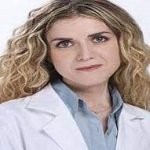
Title: 3D Printing in the craniomaxillofacial sector: a promising custom made approach
Plenary Presentation
Prof. Ilaria Cacciotti
University of Rome Niccolò Cusano, Italy
Abstract
The conventional approach for the production of cranial implants consists in the production of hand mallable pastes, to be adapted to the cranial defect during the surgery. This methodology presents several criticisms, e.g., possible contaminations, development of air bubbles during the components mixture, brittleness, occurrence of inflammation, infection, bacteria growth, expansion of surgical times, and not good aesthetic results. For these reasons, recently the custom made approach by additive manufacturing technologies has attracted a lot of interest [1]. It allows to overcome the reported limits, ensuring better aesthetical results, decreased morbidity, reduced surgery times, less blood loss, better correspondence between the implant and the graft site, lower infection/inflammation risk [2]. Concerning the materials used for the production of cranial implants, up to date, no one is able to satisfy all the required requirements [3]. The printing of different biopolymers (e.g., polymethylmethacrylate (PMMA), polylactid acid (PLA), polycaprolactone (PCL)) was tried by fused deposition modelling (FDM) technique, selecting different parameters and different pattern depositions [4-6]. All of them present several disadvantages, mainly the inflammation induction, lack of osteointegration, low mechanical properties. Thus, several strategies have been proposed in order to improve the anti-inflammation features, the osteointegrative properties and the mechanical behaviour of polymeric printed implants.
Biography
Ilaria Cacciotti is Full Professor of Biomaterials & Tissue Engineering and Materials Science & Technology at University of Rome "Niccolò Cusano". She graduated in Medical Engineering at the University of Rome “Tor Vergata” (Master of Science Award ‘Fondazione Raeli’), completed the Ph.D in Materials Engineering (Ph.D Thesis Award ‘Marco Ramoni 2011, Ph.D Thesis AIMAT Award 2012) and obtained the II Level Master degrees in “Forensic Genetics” and in "Protection against CBRNe events". She is expert in the synthesis/processing/characterisation of biocompatible nanostructured materials, particularly for applications in the biomedical/environmental/agri-food sectors. She is member of the Editorial Board of several international journals, including Applied Science-MDPI, Applied Surface Science Advances-Elsevier, Frontiers in Biomaterials, Open Journal of Materials Science- Bentham Science. For her research activity, she received more than 20 awards, incuding the L’ORÉAL-UNESCO Italy for Women and Science 2011
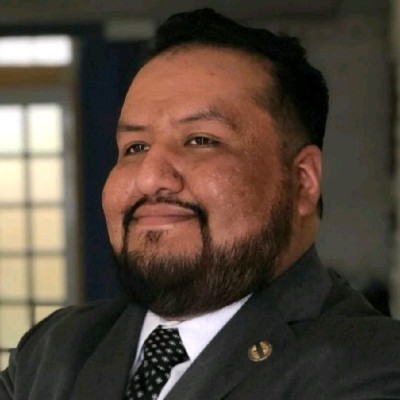
Title: 3D Printing in Mexico, Opportunities and Challenges
Speaker Presentation
Mr. Josué Miguel
Director of Operations at NEXTIA 360, Researcher and Mentor at UEH, Mexico
Abstract
Currently in Mexico as in many countries of the world, inflation (Expansión, 2023) has made the prices of products more expensive; which added to the fact that today many people still do not know what additive manufacturing or 3D printing is; As a teacher in the South-Southeast region of Mexico, even at the undergraduate level there are universities that do not have 3D Printing equipment or at most have one or two equipment, and as mentioned, inflation means that families do not have among their priorities a 3D Printer; Despite this, there has been a growth in 3D Printing ventures. And in the 2020 pandemic, 3D printing was very helpful in equipping doctors with Personal Protective Equipment, which shows us that it is a technology with great potential, which undoubtedly revolutionizes traditional manufacturing systems. Coupled with the growing nearshoring that has occurred in Mexico (Forbes, 2023), without a doubt this will help promote this type of technology in industries such as the automotive industry, among others.
Biography
Josué Miguel López Castillo is an Industrial Engineer from the Instituto Tecnológico Superior de Xalapa (ITSX) and Master in Industrial Engineering from the Instituto Tecnológico Superior de Tantoyuca (ITSTA), he has teaching experience at levels of: Baccalaureate, Bachelor's, Specialty and Master's. He has served as an advisor in Safety and Industrial Hygiene and Processes in Social Sustainability Projects in companies: REYNTECH and TOC; He in turn has certifications in: Mechanical Design of Parts (SolidWorks), Reliability Engineering, Industrial Automation through PLC, Electrical Installations. He is currently Director of Operations of NEXTIA 360, a company dedicated to Additive Manufacturing as well as engineering consulting for projects; and as a research professor and mentor at the Euro Hispanoamericana University (EUH).
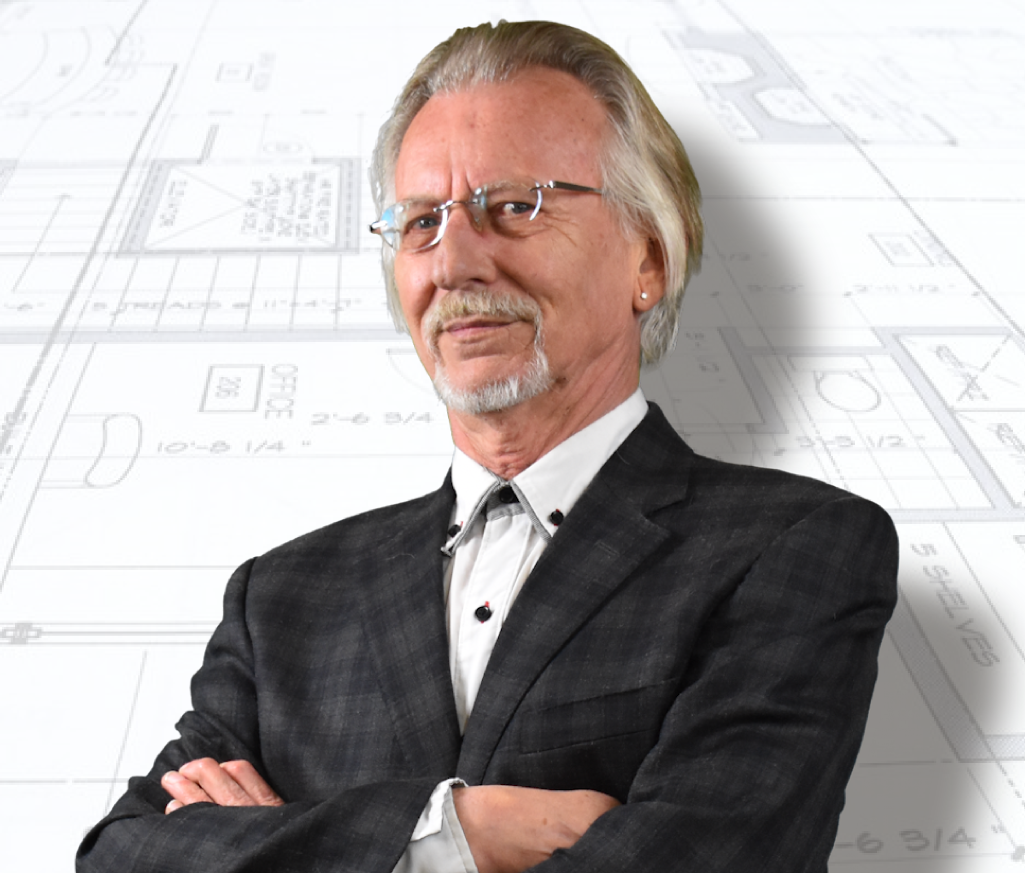
Title: If Additive manufacturing is such a great solution, why do we still have a housing crisis?
Plenary Presentation
Mr. Edward Macnab
CEO of 3DPHC-3D Printed Homes Corporation, Canada
Abstract
It is now obvious that Construction 3D Printing has the potential to positively affect both housing supply and housing cost, the two main drivers of worldwide housing crises. So, what’s holding us back?
The C3DP industry is still very young, no longer in its infancy, but more like a toddler. We have found our feet and can walk but running is still a ways off.
The very large and complex machinery needed to print houses is expensive, though competition and production volumes are moving the price point downwards.
Common concrete, the current preferred material for C3DP tends to be too fluid for use as a print material. Conventional formulation need to be adjusted and edited to achieve the characteristics needed to hold shape during the print process.
The process is not yet well enough documented to fit into regional code books as an approved construction method. This means that each structure requires additional engineering documentation to pass approvals and building inspections.
Perhaps the toughest impediment to blanket acceptance is the inertia built into both the construction industry and the municipal regulations that allow or disallow new construction.
There are solutions for each of these challenges.
Biography
Ed Macnab is Chief Executive Officer and one of the core group of founders of 3DPHC – 3D Printed Homes Corporation in Calgary, Canada. 3DPHC is a socially conscious start-up that truly places people ahead of profits. He has had a long career spanning the construction industry, the Canadian oilfield, telecom design and manufacture, finally retiring as an International IT Project Manager. Our VISION is to see every family living in a home that is affordable and meets their needs. Our MISSION is to reduce the cost of housing by using advanced technology and materials.
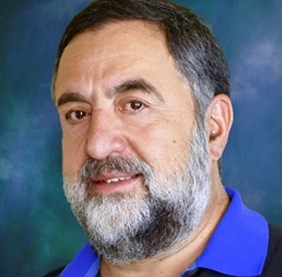
Title: Innovation in Thermal Management with AM
Plenary Presentation
Dr. Andreas Vlahinos
CTO of Advanced Engineering Solutions, USA
Abstract
Minimal surfaces minimize the total surface area subject to some boundary or volume constraint. Soap bubbles, catenoidal soap-film surfaces, and gyroids on butterfly wings are some examples in nature. In the early seventies, mathematicians discover the mathematical expressions of minimal surfaces. These surfaces were not used in product design since we couldn’t generate these designs in CAD and we couldn’t manufacture them. Recent advances in CAD systems and additive manufacturing enable designers to design and manufacture these amazing designs. Minimal surfaces such as Gyroids, Schwarz, Lidinoid, Diamond, SplitP, Neovius have remarkable properties for strength, heat transfer, and manufacturability. When a volume is infilled with a minimal surface, is subdivided into separate continuous volumes that are intermingled. This property makes minimal surface geometries ideal for heat exchangers. In addition, at any point the angle of these surfaces measured relative to normal to the print tray is smaller than 45 degrees and therefore these geometries can be 3D printed without supports.
In order to evaluate the performance and optimize these designs a conjugate heat transfer analysis must be performed. The challenge to the simulation process is that the minimal surface geometries are not the typical B-Rep geometry but they are generated by implicit or voxel-based modelers. This presentation will demonstrate the processes to overcome these challenges with an example of an award-winning avionics heat exchanger design. The hot fluid is the transmission oil and the cold fluid is the jet fuel. The steps of conceptual design, the parametric geometry generation, the real-time preliminary simulation, and the final CFD validation will be presented. In designing for additive manufacturing, a “manufacturing process simulation” needs to be performed in order to evaluate the residual stress levels, the surface accessibility, and the distortion sensitivity. The manufacturing process simulation dictates design changes in order to reduce residual stress and distortion. The design modifications to improve manufacturability will also be presented. The digital thread from concept to design to simulation to additive manufacturing and to postprocessing, with subtractive manufacturing, will be demonstrated. The heat exchanger has been produced using additive manufacturing and is in the process to be qualified as an end-usercomponent.
Biography
Dr. Andreas Vlahinos is the CTO of Advanced Engineering Solutions. Andreas has concentrated on DfAM, Computer Aided Innovation, Generative Design, Lattice Structures, and Simple Solutions to Complex Problems. He has been instrumental in rapid product development through the implementation of Computer Aided Engineering for several Government agencies such as NASA, NREL, SANDIA, DOE, NCDMM, and US Army Aviation & Missile Command and several industry partners such as SpaceX, Lockheed Martin, General Dynamics, United Launch Alliance, Rafael Defense Systems, NAVISTAR Defense, etc. He has been a Professor of structural engineering at the University of Colorado. Several times he received the Professor of the Year Award. He has received the R&D 100 award and several patents. He received his Ph.D. in Engineering Science and Mechanics from the Georgia Institute of Technology. Finally, he is regularly invited as a keynote speaker and panelist on a variety of subjects (Generative Design, Innovation, DfAM, IoT) at international conferences.
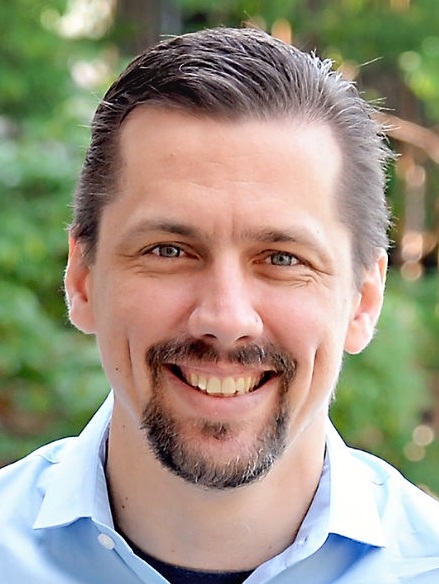
Title: The History of Cement Based 3DCP
Speaker Presentation
Mr. Jeffrey Martin
Lead Architect, Black Buffalo 3D Corp, USA
Abstract
3DCP has gained notariry in recent years, but the Concept of 3D Construction Printing isn’t as new as one might think. This presentation summarizes the History of 3DCP technology: From early 20th Centrury concepts to Todays Industrial size building printers and the different steps it took to get here; we review the different types of materials, machines the benefits, shortcomings, and misconceptions of this emerging technology.
Biography
As an experienced Licensed Architect and Project Manager, I offer 20+ years of construction and professional architectural experience that includes concept-to-completion of an array of Single family Residential Homes, High-End/Mixed-Use, Corporate, Municipal, Commercial, Retail, Hospitality, Educational, and LEED, projects. In the past I’ve focused on integrated project delivery, Lean Construction, and educating clients and coworkers in the power of BIM. Currently, I am Lead Architect for Black Buffalo 3D corporation, where I Provide Cost and Material evaluations for potential projects, create conceptual 3DCP designs and develop construction details, as well as model, slice, and generate g-code for our prints
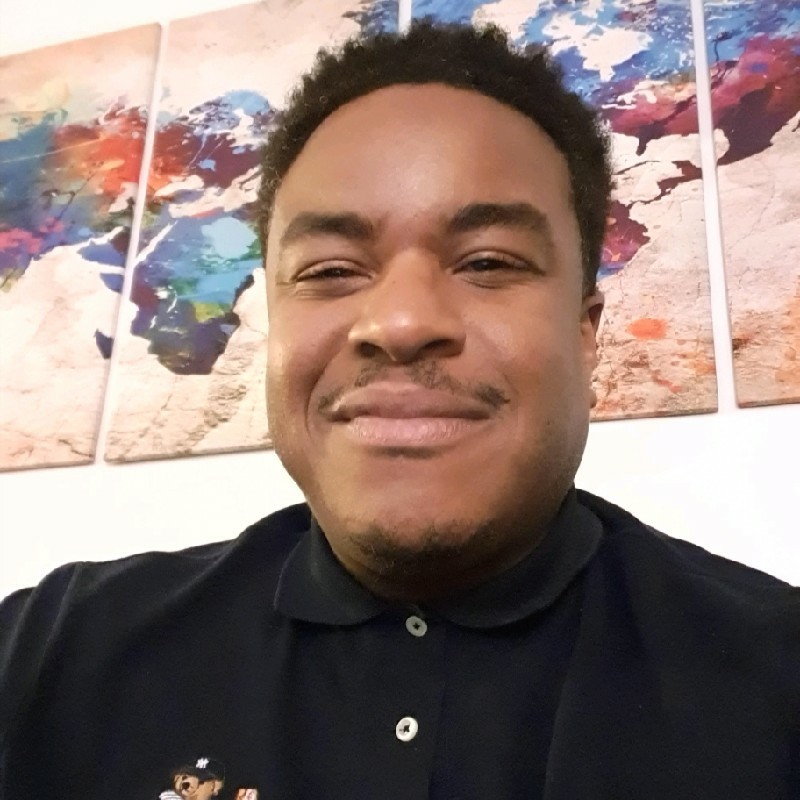
Title: De-Centralized Manufacturing - how the Blockchain can secure 3D Printing.
Speaker Presentation
Mr. Ty Canion
Founder and CEO of Canion3D Inc., Germany
Abstract
De-centralized manufacturing is a new manufacturing model that allows for the distribution of production tasks among a network of individuals or machines, instead of relying on a centralized entity to control the entire process. In this article, we will explore how blockchain technology can be used to secure 3D Printing in a de-centralized manufacturing environment.
Blockchain technology is a digital ledger that is used to record and verify transactions. It is decentralized, meaning that it is not controlled by any single entity, making it highly secure and tamper-proof. In a de-centralized manufacturing environment, the use of blockchain technology can ensure that the 3D printing process is secure, transparent and tamper-proof. This is achieved by recording all 3D printing transactions on the blockchain, allowing all parties involved in the process to have a clear and auditable record of the process.
One of the key benefits of using blockchain technology in de-centralized manufacturing is that it can help to prevent the distribution of counterfeit parts. 3D printing is often used to produce low-cost copies of parts, which can be difficult to detect. By recording all 3D printing transactions on the blockchain, it becomes possible to track the origin of each part and ensure that it is authentic. This can prevent the spread of counterfeit parts and protect the integrity of the supply chain.
Furthermore, the use of blockchain technology can also enable the implementation of smart contracts. Smart contracts are digital agreements that are stored on the blockchain and can be automatically executed when certain conditions are met. This allows for the automation of the 3D Printing process and ensures that all parties involved in the process are able to receive payment in a timely and secure manner. Smart contracts can also be used to protect 3D Printable files and creating non-fubgible tokens (NFTs).
In conclusion, de-centralized manufacturing is a new manufacturing model that can enable the distribution of production tasks among a network of individuals or machines. By using blockchain technology to secure 3D Printing in a de-centralized manufacturing environment, it is possible to ensure that the process is secure, transparent and tamper-proof. Additionally, it can also prevent the distribution of counterfeit parts and enable the implementation of smart contracts to automate the process. The use of blockchain technology in de-centralized manufacturing will lead to greater security and efficiency in the 3D Printing industry.
Biography
Ty Canion is the founder and CEO of Canion3D Inc. a technology company focused on the Additive Manufacturing industry, which he founded in 2015. He is a 15 year veteran of the U.S. Air Force and has worked in various domains of technology across several industries. He has completed his Master’s Degree in Business Administration with concentration of Information Systems from the University of Arizona GC and his bachelors in Entrepreneurship Studies also from UAGC.

Title: Personalising Surgery: Medical 3D Printing at the Point of Care
Keynote Presentation
Dr. Henry Pinchbeck
Founder and CEO of 3D LifePrints, UK
Abstract
3D LifePrints is a leading Personalized Surgery and Medical 3D Printing company. Its focus is the digitization of the surgical planning process and the design & manufacture of patient specific medical devices. 3D LifePrints’ USP is that it provides its services from embedded facilities at the Point of Care within host hospitals, allowing the clinicians direct access to the full range of 3D technologies. 3D LifePrints recently obtained its first FDA 510k certification and opened a facility in the USA, at the Texas Medical Center in Houston.
Biography
Henry Pinchbeck is a Founder and the CEO of 3D LifePrints. A scientist by training, he is an experienced businessman and a UK qualified solicitor. As CEO, Henry is responsible for all 3D LifePrints’ global activities but particularly concentrates on the development of the medical 3D printing sector in the UK and USA.
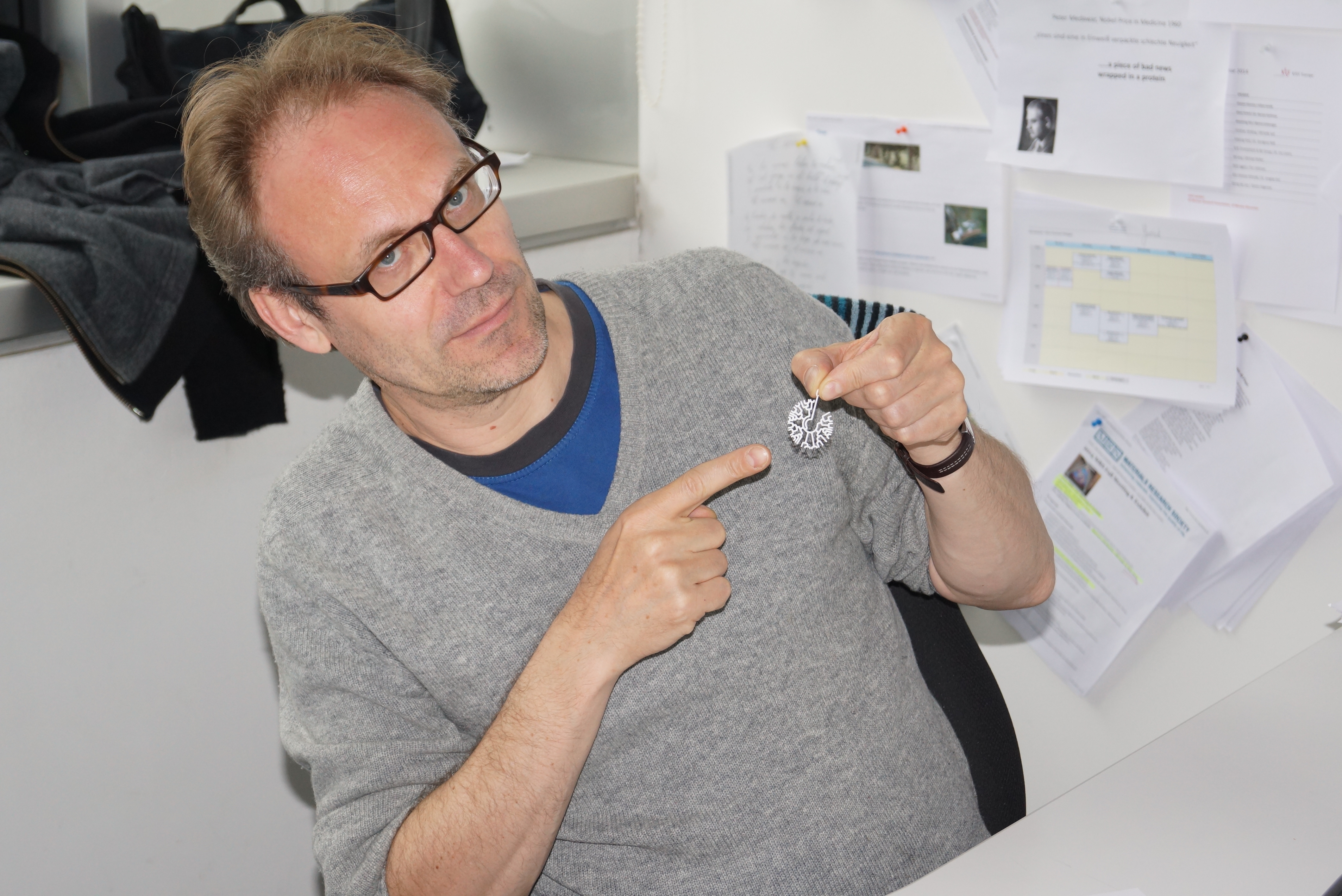
Title: Biomanufacturing of multicellular engineered living systems –Self-assembly & living cells
Keynote Presentation
Prof. Per A. Löthman
Foviatech GmbH, Hamburg, Germany; Kaiserslautern University of Applied Science, Zweibrücken, Germany
Abstract
Over the last decade, several key advances have been made with important implications for the development of multicellular engineered living systems (M-CELS). Induced pluripotent cells could be produced from human dermal fibroblasts and it is now widely accepted that a pluripotent cell population can be obtained from fibroblasts of any subject.
At present, there are essentially two methods used to fabricate M-CELS. In one method—‘top-down engineering’—cells are seeded onto or into substrates, in precisely the format needed to perform their function. Simple monolayers fall into this category, as well as cells widely dispersed in a natural or synthetic matrix, that are not required to interact. The second method takes advantage of the natural ability of cells to differentiate and self-assemble. The first of these follows well established procedures, and is well suited to 3D-bioprinting. The latter is much less established or understood, and the applicability of bioprinting depends on the type of system being fabricated and in the end, one needs to rely on the intrinsic capability of the cells to modulate their phenotype, through interactions with their neighbouring cells and matrix, in order to gain the desired form and function. Moreover, these same intrinsic competencies enable the ‘manufactured product’ not only to self-assemble, but also to selfrepair, adapt to changing conditions, and even potentially to self-replicate.
Bioprinting represents but one of many approaches that, when further developed, can play an important role in the manufacture of M-CELS. Drawing upon the self-organizing capabilities of living cells, it has already proven sufficient in a number of studies, when growing a particular biological component, to place the various cells in sufficiently
close proximity to each other in an appropriate matrix material or on a suitable substrate and let them ‘do their own thing.
There is little doubt that bioprinting will prove to be a useful tool in the fabrication of M-CELS, but its range of applicability will depend on several factors and the ability to surmount the challenges mentioned above. There will need to be a fundamental change in the way that we address the fabrication of complex biological systems, and the ability for self-assembly needs to be embraced and understood. Biological variability also needs to be recognized and reduced to the extent possible. Finally, much work is needed before the full potential of organoid systems can be fully realized. And when it is, the role for bioprinting needs to be re-examined. Perhaps it comes in when we start to address the need to interact with or interrogate the organ.
Biography
Dr. Per A. Löthman obtained his Ph.D. degree from Twente University , The Netherlands in the field of Magnetics and Self-assembly, conducted research in Canada, France and Germany on carbon nanotubes, Graphen and related 2D nanomaterials. His research is interdisciplinary and involve sensors and sensing, 2D advanced materials, BioNanotechnology including DNA, S-layers, Viruses (archaea, bacteriophages), Biomolecular Architecture, functional surfaces, microfabrication etc. Dr. Löthman has published over 90 scientific articles, several book chapters and serves as a reviewer and he is on the editorial board for several journals such as Nature, Nature Materials, Journal of Bioanalytical and Analytical Chemistry, Journal of Colloid and Interface Science, Thin Solid Films, Sensors and Actuators, Microsystems Technologies, Biophysical Reviews and Letters and International Јоurnal of Applied Mathematics and Theoretical Physics (IJAMTP). Dr. Löthman is CSO (Chief Scientifical Officer) at Foviatech GmbH in Hamburg, Germany, a young innovative high-tech company in the field of advanced materials and artificial intelligence, and a senior lecturer in “Nanomedicine, Nanopharmacy” and “Sensors and Sensing in Engineering, Biology and Medicine” (Kaiserslautern University) and Mechatronics Systems and Design (Hamburg University), Germany and Manufacturing Engineering (HTW Berlin) Germany.
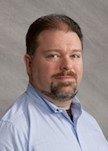
Title: Extraordinary Interfacial Behaviors of OsteoFab™ Devices
Plenary Presentation
Mr. Anthony (Tony) DeCarmine
CTO at Oxford Performance Materials, USA
Abstract
Synthetic prosthetic materials have been used to make repairs to the human body for centuries. Tissue response to implanted materials is critical to success in restoring function and insuring long term survival. The family of PAEK high performance polymers (encompassing PEEK, PEKK and others) has served well in the permanent implant world for many years. During that time, observations suggest the interface behaviors of PEEK may not be optimal for all uses – while inert and directly harmless, this inertness also seems to defeat (or at the very least, not aid) the body’s mechanisms for defense against microbial ingression. Also suffering this inertness are mechanisms driving bony apposition facilitating incorporation of permanent reparative devices. While PEKK is classified as a PAEK family system by virtue of general structure, PEKK has substantial and important specific differences enabling fabrication via Powder Bed Fusion as well as providing substantially different surface chemistry behaviors that contribute to the defeat of microbial infection and enhance apposition of living bone directly to a device. An overview is presented revealing examinations of laboratory work performed to enlighten understanding of surface energy and resolve the relationship between composition and topography.
Biography
Anthony (Tony) DeCarmine is OPM’s Chief Technology Officer. He is an engineer with more than 30 years of diverse experience in the industrial, aerospace and engineered materials areas. Mr. DeCarmine has led each of OPM’s high performance thermoplastic development activities, broadly spanning process and application. Mr. DeCarmine is the author of numerous patents, several relating to all aspects of preparation, process, recycling, and applications of OPM’s proprietary OXPEKK® material in laser powder bed fusion processes. Mr. DeCarmine sits on several ASTM committees related to Medical Materials, Additive Manufacturing, Structural Composites, and 3D Structured Light Metrology.
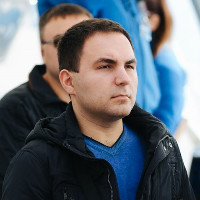
Title: Applying of additive technologies in mechanical engineering
Speaker Presentation
Mr. Nikolai Kulikov
CEO at Kulikov LLC, USA
Abstract
Additive technologies are already actively used in mechanical engineering and the potential for their application in the future is very high. With new materials and modified equipment, all the benefits of 3D printing can be used, including the ability to quickly and accurately manufacture components, eliminate the need for a large number of different tools for processing the workpiece, and reduce material waste. This makes it possible to reduce production costs, as well as to produce complex-shaped parts with high precision and production efficiency. In addition, 3D printing is an additional possibility of recycling plastic, which helps to reduce the negative impact of waste on the environment. In my work, I use this technology in the production of complex-shaped seals with an internal closed cavity of the required configuration. 3D printed O-rings designed by me for the intercooler air line for a number of internal combustion engines have shown high performance and increased wear resistance compared to counterparts produced by the traditional method. In the future, this sealing option can be used not only in the automotive industry, but also in the aviation, space, and medical industries, namely in the production of spare parts for medical equipment.
I also used this production method to make the rotor and housing for BLDC motors and permanent magnet generators. Motors and generators made from 3D printed parts are light weighted, which is critical in the production of e-bikes and quadcopters, for example.
Biography
Nikolai Kulikov specialist of the Department of automatic installations of the Volgograd Polytechnic University, Russia. Owns its own production of auto parts for Renault, Nissan, BMW, Mercedes, Volkswagen, Citroen since 2019. He also owns an LLC in the USA.

Title: Stereolithographic Additive Manufacturing of Practical Components
Keynote Presentation
Prof. Soshu Kirihara
Professor, Osaka University, Japan
Abstract
In stereolithographic additive manufacturing (STL-AM), 2-D cross sections were created through photo polymerization by UV laser drawing on spread resin paste including nanoparticles, and 3-D models were sterically printed by layer lamination. The lithography system has been developed to obtain bulky ceramic components with functional geometries. An automatic collimeter was newly equipped with the laser scanner to adjust the beam diameter. Fine or coarse beams could realize high resolution or wide area drawings, respectively. As the row material of the 3-D printing, nanometer sized metal and ceramic particles were dispersed into acrylic liquid resins at about 60 % in volume fraction. These materials were mixed and deformed to obtain thixotropic slurry. The resin paste was spread on a glass substrate with 50 μm in layer thickness by a mechanically moved knife edge. An ultraviolet laser beam of 355 nm in wavelength was adjusted to 50 μm in variable diameter and scanned on the spread resin surface. Irradiation power was automatically changed for an adequate solidification depth for layer bonding. The composite precursors including nanoparticles were dewaxed and sintered in the air atmosphere. In recent investigations, ultraviolet laser lithographic additive manufacturing (UVL-AM) was newly developed as a direct forming process of fine metal or ceramic components. As an additive manufacturing technique, 2-D cross sections were created through dewaxing and sintering by UV laser drawing, and 3-D components were sterically printed by layer laminations with interlayer joining. Through computer-aided smart manufacturing, design, and evaluation (Smart MADE), practical material components were fabricated to modulate energy and material transfers in potential fields between human societies and natural environments as active contributions to Sustainable Development Goals (SDGs).
Biography
Soshu Kirihara is a doctor of engineering and a professor of Joining and Welding Research Institute (JWRI), Osaka University, Japan. In his main investigation “Materials Tectonics as Sustainable Geoengineering” for environmental modifications and resource circulations, multi-dimensional structures were successfully fabricated to modulate energy and materials flows effectively. Ceramic and metal components were fabricated directly by smart additive manufacturing, design and evaluation (Smart MADE) using high power ultraviolet laser lithography. Original stereolithography systems were developed, and new start-up company “SK-Fine” was established through academic-industrial collaboration.
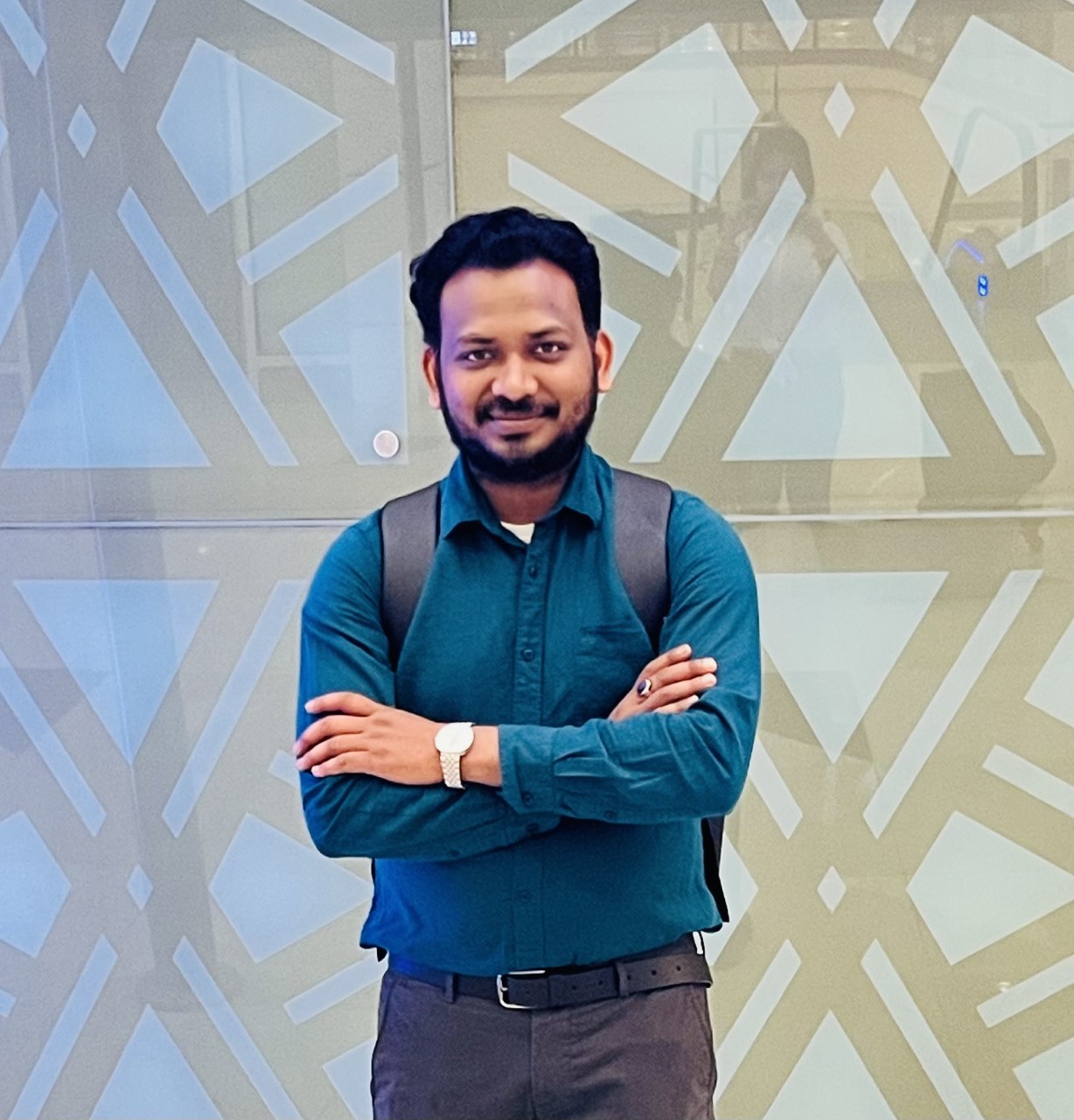
Title: A hybrid approach for wire based metal 3D printing
Speaker Presentation
Mr. Neel Kamal Gupta
Indian Institute of Technology Bombay, India
Abstract
Additive manufacturing is an emerging technology in which material is added layer by layer. The hybrid approach allows the use of multiple processes and technologies to make the 3D-printed component defect free. The benefits of conventional and additive processes are utilized for making the component faster and more cost-effective. Hybrid Layered Manufacturing (HLM) is the process in which a 3D component is made by adding and subtracting material layer by layer. HLM is predominantly for a metallic component in which the raw form of material used is wire and deposited through an arc (MIG/TIG), Laser, EB, etc., and a small amount of material is removed to achieve the final geometry and therefore making the system hybrid. The various hybridization in the HLM process includes approach (addition/subtraction), layering strategy (horizontal/conformal), joining process (arc/Laser/EB), and kinematics (3/4/5-axis). A system is developed with multiple stations to perform simultaneous five-axis motion to create a 3D printed component named “Multi-Station Multi-Axis Hybrid Layered Manufacturing (MSMA-HLM).” The applications of MSMA-HLM can be found in aerospace, automobile, marine, medical, etc. The various case studies are presented. The purpose of providing multiple stations such as pre-heating, peening, and inspection is to make component defect free.
Biography
Neel Kamal Gupta is pursuing Ph.D. in the department of mechanical engineering at the Indian Institute of Technology Bombay (IIT Bombay) in metal-based 3D printing. During his Ph.D., he has filled two patents, presented four international conference papers, and published one journal paper with few in the pipeline. His expertise is in the wire-based additive manufacturing system and residual stress management for metallic components. He is a reviewer of a few reputed journals.
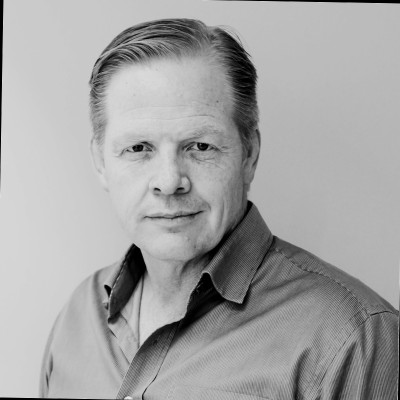
Title: Transitioning 3DCP from Dream to a Reality (Commercialisation of Digital design and 3D Printing)
Plenary Presentation
Mr. Paul R Daniel
CEO of TBS - 3DCP Product Licensing & Quality Managment, Ireland
Abstract
After this year’s World of Concrete, it is clear that on-site house manufacturing, provided autonomously with a ridged product (i.e. concrete, mortar etc.) has raised significant interest.
So, we are all in agreement that 3D printed products are now a reality within the construction sector, how and what that looks like is still not 100% clear. Everyone is running off in different directions trying to carve out their stake in the yet undefined ecosystem, and huge amounts of money are thrown around by major multinationals.
After going through all of this within the Slipform market 20 years ago, there is a key issue that keeps me up at night when it comes to 3DCP’. How do we produce a strong reputable industry and product that can be trusted in an ecosystem that supports & proves competency while not stifling innovation and growth?'
To add to the risk, we have many technical and theory-based specialists emerging from universities and labs BUT severely lack experience and gravitas when it comes to on-site project-specific 3DCP Design, Construction delivery & most importantly Commercial leadership within this sector.oon…
Biography
With degree qualifications in Construction Management, Civil Engineering and an MBA, Paul has for over 2 decades worked on construction sites & consulting practices building businesses within the Civil and Construction Sectors. With a significant amount of that time within the Concrete Slipform Industry and working with Vehicle Restraint Systems. For the last 10 years his company, TBS has successfully licensed Concrete Barrier Systems, overseeing the Design Integration, Installation, Supplier/Installer Competency, Quality Management and Product Certification. With this knowledge, TBS has teamed up with Irish 3DCP leaders Hardcourt Technology & Design Partners to offer an ‘off the shelf ‘3DCP product portfolio underpinned by a tailored QMS & Certification Process. Under license, CUR3D Products are designer & contractor friendly, fully traceable & most importantly certifiable. If you buy a printer tomorrow, CUR3D has an 'off the shelf' certifiable product to let you print houses.
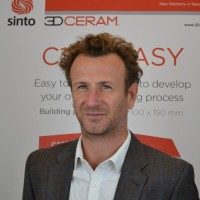
Title: Smart factory and ceramics 3D, the encounter of the 3rd kind !
Speaker Presentation
Mr. Arnaud Roux
Head of European sales department of 3DCeram Sinto, France
Abstract
Arnaud Roux is head of European sales department of 3DCeram Sinto. After obtaining a Master of International Business Management in France and a Bachelor of business administration in Scotland, Mr Roux worked forLegrand (Saudi Arabia) and Air Flow (France) before joining 3DCeram Sinto in 2016. In 19 years since its creation, 3D Ceram became a world leader in 3D ceramic printing selling 3D ceramic printers all over the world and having clients covering a broad range of applications (aerospatial, industry, biomedical, defense, electronic…).
Biography
Arnaud Roux is head of European sales department of 3DCeram Sinto. After obtaining a Master of International Business Management in France and a Bachelor of business administration in Scotland, Mr Roux worked forLegrand (Saudi Arabia) and Air Flow (France) before joining 3DCeram Sinto in 2016. In 19 years since its creation, 3D Ceram became a world leader in 3D ceramic printing selling 3D ceramic printers all over the world and having clients covering a broad range of applications (aerospatial, industry, biomedical, defense, electronic…).

Title: Will be updated soon
Keynote Presentation
Mr. Luigi Monaco
Managing Partner PULVERMEISTER GmbH, Germany
Abstract
Powder bed printing in polymers offers significant advantages for serial production in 3D printing, especially the elimination of support structures. However, challenges in extracting parts, surface finishing, and reusing removed powder can hinder its full potential. In this keynote speech, we will emphasize the importance of innovative post-processing techniques to overcome these challenges, delivering high-quality, functional products while reducing costs and increasing efficiency.
Drawing from our company's experience in producing over 250,000 parts in PA11 black, we will provide a brief overview of our process and the solutions that have proven effective in reducing costs and saving time. Attendees will gain valuable insights into advanced post-processing techniques that can be applied to their operations.
We will showcase the surface finish of parts using three different post-processing units, including our patented system for surface finishing. This unique approach utilizes blasting material, printed with the same material as the parts, and recycles it in the machine. Demonstrating the effectiveness of our techniques, we aim to inspire innovation in your processes. In conclusion, we will present our most advanced machine, designed to streamline the post-processing workflow from the built chamber to the usable part, without requiring direct handling of the parts or exposing the operator to powder, enhancing both efficiency and safety.
By attending this keynote speech, participants will gain a deeper understanding of the strategies and technologies in post-processing for polymer powder bed printing. This knowledge will enable them to elevate their own production processes and achieve better results. Don't miss this opportunity to unlock the full potential of polymer powder bed printing through innovations in post-processing.
Biography
Luigi Monaco Born in Dar Es Salaam, Tanzania, Luigi Monaco is a globally-minded designer, inventor, and entrepreneur with a diverse cultural background. Having been raised in Saudi Arabia and Germany, he brings a unique perspective to his work. As a self-taught designer and engineer, Luigi has built a reputation for his ability to find simple and effective solutions to complex problems. He is the owner of two successful German GmbHs and holds several national and international patents. With a strong understanding of both hardware and software, as well as mechanical engineering, Luigi's expertise spans across multiple industries. He is known for fostering win-win-win relationships, always looking for ways to benefit all parties involved. His open-minded and collaborative approach has led to many successful projects and partnerships. In addition to his business acumen, Luigi is also fluent in English, German, Italian, and French
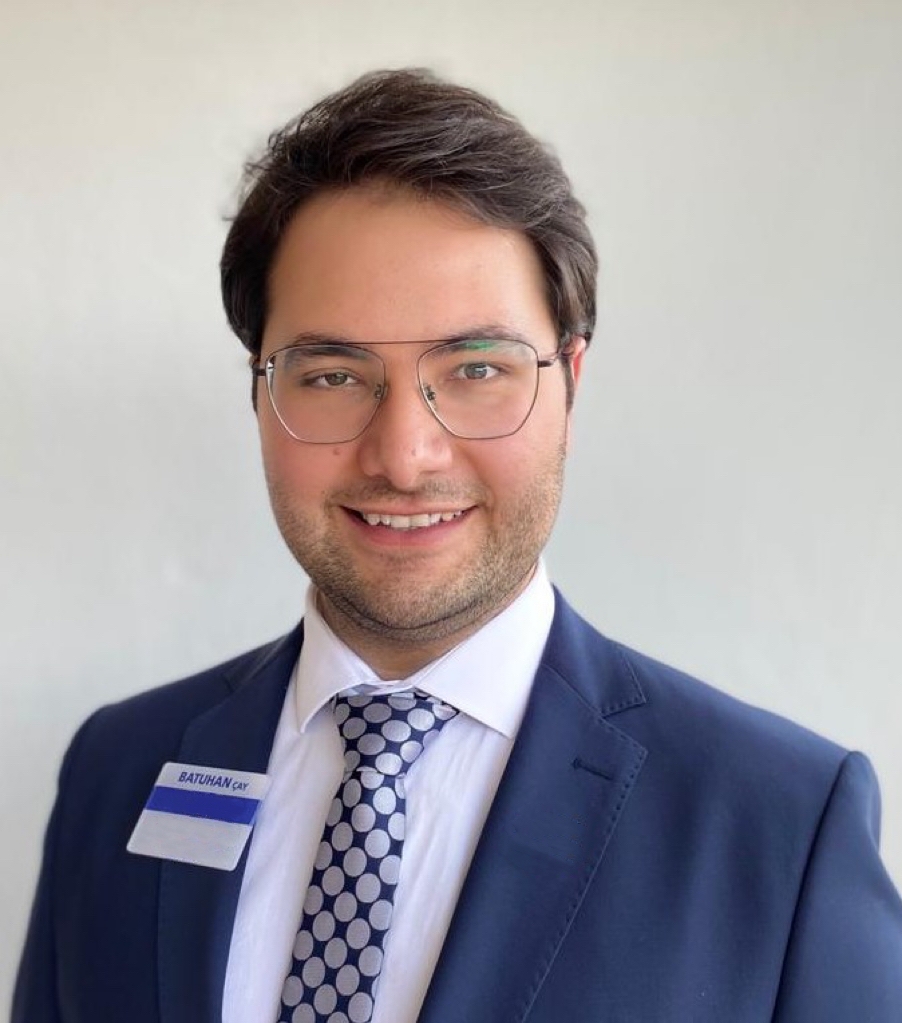
Title: Roles of Manufacturer, Seller and Customer in AM
Speaker Presentation
Mr. Batuhan Cay
Additive Manufacturing Representative, Turkey
Abstract
This speech will point out every point of view on consumable products. While AM is enhancing, the supply chain of consumables of AM is getting more complex. In the AM, manufacturers should be led on customer needs. In this relation, sellers play a significant role, They have to be clear, honest to the customers, and directive to the manufacturers. Right now, the R&D and defense industries use the AM, but in the future, other industries will be part of AM with enough quality, product range, and affordable prices.
Biography
After earning my bachelor's degree in Material Science, I have started studying micro and nanoparticles in Nanotechnology Programme. 2 years ago, I started a business in Additive Manufacturing. While studying for my master's, the company I founded grew up and met with Whole Metals. Right now, I'm the coordinator of Turkey in Whole Metals company. Started in 2022 and I am working with governmental institutions and universities / R&D facilities. Supplying metal powders and AM machines from the largest manufacturers in the world to 4 continents.
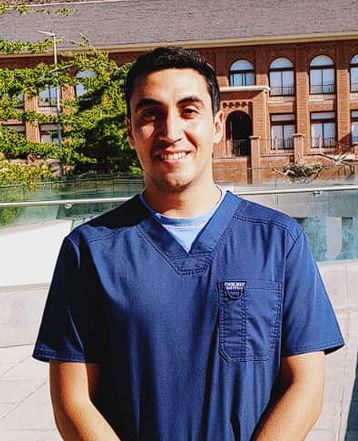
Title: Interdisciplinary collaboration for the customized design of surgical pieces in complex cases
Speaker Presentation
Mr. Diego Godoy
Chilean Kinesiologist, South America
Abstract
Designing 3D pieces for shoulder and elbow surgery in conjunction with the surgical team has proven to be an effective tool for improving operating times and improving postoperative results. This collaboration allows us to anticipate complications at the time of surgery, providing safe and reliable solutions for complex cases that would otherwise be very risky to approach, expanding the range of cases eligible for reconstructive surgery with the assurance of achieving optimal results (angulations less than 0.8°) and fewer complications.
Biography
Diego Godoy, 31 years old, Chilean Kinesiologist, I have dedicated myself to the development of technological health projects from software, hardware, and surgical instruments, designing a 3D printable mask with over 27 million downloads, a software for the tracking and evaluation of chronic wounds using image processing with 9 times greater precision than traditional methods, a preventive orthosis for hand and wrist injuries that reduces the activity of extensor muscles and design of custom pieces for shoulder and elbow surgeries.

Title: The Current State of Large Scale Wire Arc Additive Manufacturing
Keynote Presentation
Dr. Murali Mohan Cheepu
Research Manager, South Korea
Abstract
Large Scale Wire Arc Additive Manufacturing (LS-WAAM) is a relatively new 3D printing technology that has been gaining much attention in recent years due to its ability to produce large parts rapidly and at a lower cost than traditional manufacturing methods. LS-WAAM uses a robotic arm and welding power sources to melt and fuse the metal wires and deposit the layer using welding arc to create a 3D object. The current state of LS-WAAM is promising, with ongoing research and development efforts aimed at improving the technology's capabilities and reducing costs. LS-WAAM has already been used to produce large components for various industries, including aerospace, automotive, and defense. One of the main advantages of LS-WAAM is its ability to produce parts with complex geometries that would be difficult or impossible to manufacture using traditional methods. Additionally, LS-WAAM can use a variety of metals, including steel, titanium, aluminum, and nickel alloys, making it versatile for many applications. The aim of the talk is to address the current state of the WAAM and its achievements in manufacturing industries and its future scope. In addition, some of the case studies and experimental results of the titanium, aluminum, and nickel based alloys of large scale components and challenges are also discussed. To create a large parts, time and cost are the major concerns using 3D printing along with the quality and reliability. Using WAAM or directed energy deposition methods are able to produce to meet the standards with lower cost and less wastage of the materials. Overall, LS-WAAM is a promising technology with many potential applications in various industries. Ongoing research and development efforts are focused on addressing the remaining challenges and improving the technology's capabilities.
Biography
Dr. Murali Mohan Cheepu is a research manager at STARWELDS Inc. He has over ten years of experience in the manufacturing and research industries. His research focuses on welding and joining, additive manufacturing, automation, digitalization and artificial intelligence. In addition, he is doing research on a novel Super-TIG welding process to increase productivity. Cheepu has won a number of awards, such as best researcher award from KWJS, trusted reviewer from the Institute of Physics in the UK, and outstanding young manufacturing engineer award from the SME, USA. He serves on the editorial board, reviewer, conference chair and technical committee member. Cheepu has written several peer-reviewed articles, welding research supplement articles in the American Welding Society and patents. Cheepu has a master's degree in welding engineering from the NIT Tiruchirappalli and a doctorate in mechatronics engineering from Kyungsung University.
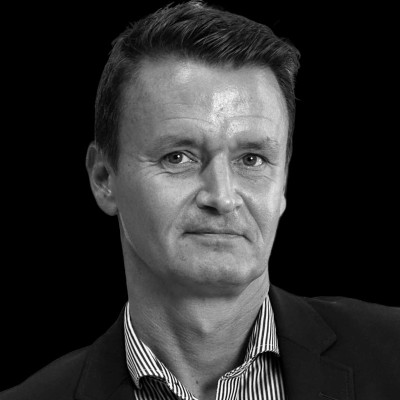
Title: Real truth about 3D construction printing from the world leader in the industry
Speaker Presentation
Mr. Philip Moustgaard
CMO at COBOD International, World leader in 3D construction printing, Denmark
Abstract
WORLD LEADER IN 3D CONSTRUCTION PRINTING SOLUTIONS
- Leading in VOLUME with most printers sold globally. The total of COBOD printers will reach 100 in 2023.
- Leading in APPLICATIONS from residential and commercial buildings to wind turbine towers.
- Leading in TECHNOLOGY with unsurpassed hard- and software solutions facilitating the fastest and tallest construction of multi-story buildings.
- Leading in COST based on the game-changing D.fab solution, reducing the cost of 3D printable materials with -90% vs. industry standards.
Our mission is to BUILD SMARTER
THROUGH MULTIFUNCTIONAL CONSTRUCTION ROBOTS BASED ON 3D PRINTING TECHNOLOGY
Our vision is AUTOMATE MINIMUM 50%
OF CONSTRUCTION PROCESSES ON BUILDING SITES AROUND THE WORLD
Biography
CMO at COBOD International for the past 2 years. Senior marketing roles within globally leading building industry giants such as Schneider Electric, Rockwool and LIXIL/Grohe.
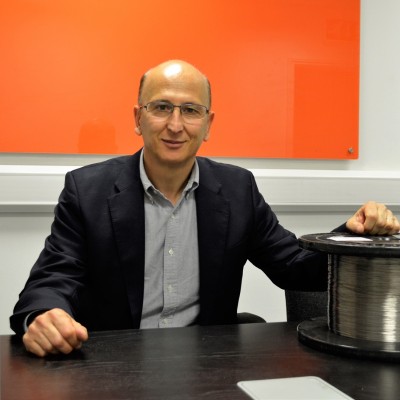
Title: Nano Ti
Speaker Presentation
Dr. Serdar Atamert
CEO at Epoch Wires, UK
Abstract
Additive Manufacturing (AM) is increasingly gaining traction in the aerospace industry with most major aircraft now incorporating AM manufactured components and parts. From a material stand-point, Ti6Al4V alloy is recognised as the"workhorse" of titanium aerospace alloys and represents almost half of the market share of titanium products used worldwide. Its key advantage is its strength-to-weight ratio making it suitable for light-weighting components especially in highly loaded aerospace applications, as well as inherent compatibility with composite structures. Conversely, the limitations of Ti6Al4V are that it is typically machined from forged blocks - which is time-consuming, expensive and environmentally wasteful - it has rightly been a target for DED (Direct Energy Deposition) AM for some time in the wider aerospace sector.
However, there is a key problem with AM of Ti6Al4V - it suffers from a large columnar grain solidification microstructure, leading to anisotropic mechanical properties in particular, with a significant reduction in tensile ductility in the transverse direction and a reduced fatigue life. Most of the attempts to improve this, by implementing additional manufacturing steps have failed to offer an economical and practical solution.
All wire-based AM of Ti6Al4V is carried out with solid wires, which are manufactured according to current aerospace standards. The proposed solution is based on a novel wire manufacturing technology in which small quantities of elemental nano powders can be precisely added to the composition of wires -with the aim to effect the solidification dynamics and resultant microstructures.
In this study the most efficient quantity and type of grain refinement addition and its resultant properties across a spectrum of different wire-based AM processes including laser, arc and electron-beam techniques. If successful, it is anticipated that this technology will be a "game changer" and facilitate much wider use and adaptation of wire-based AM for large-scale aerospace applications.
Biography
CEO of Epoch Wires, PhD (Cantab), MBA (Cranfield)

Title: Multiscale assessment on the quality of metal powder feedstocks for Additive Manufacturing
Speaker Presentation
Mrs. Chrystelle Reynaud
Regional Sales Manager, EAG Laboratories, France
Abstract
After enabling the production of customized consumer products, Additive Manufacturing has entered the medical, aerospace, automotive industries and more.
Additive manufacturing (AM) is attractive for producing parts with access to unprecedented geometry/configuration complexity, material composition gradient control, and lightweight structure design not attainable by traditional processes. However, the long-term success of this rapidly developing technology hinges, to a large degree, on the ability to produce functional parts and components reliably. Material Analysis can help all along the value chain, from Raw materials control to process optimization, Finished parts/products control, Aging tests, and Failure Analysis of the manufactured parts.
This presentation will focus on Multiscale assessment on the quality of metal powder feedstocks for additive manufacturing. Controlling defects is of primary importance to attain AM metal parts with mechanical strength and fatigue life approaching their forged counterparts. Defects in AM parts fall into two main categories: porosity and crack. These can be incurred by various mechanisms ; we’ll see that defect reduction starts with the quality control of feedstocks.
Biography
Chrystelle Reynaud is Regional Sales Manager at Eurofins Material Science and Engineering / EAG Laboratories, a global leader in Materials Testing Services. Owning a PhD in Analytical Chemistry, she is experienced in material analysis and surface characterization for various industries and materials. She is passionate about the wide range of challenges Material Analysis can help tackle.
“ Will be updated soon...”
+91 9491 456 452
Door No.200, Immidhihalli Main Road, Whitefield-560066, Bangalore, India
About Us
Global Scientific Guild organizes conferences and webinars to promote quality research and real world impact in an atmosphere of true international co-operation between scientists, doctors, professors, practitioners, engineers and industry by bringing together the world class renowned personalities to discuss the latest developments and innovations at one common platform.